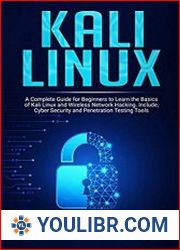
BOOKS - Introduction to Kali Purple: Harness the synergy of offensive and defensive c...


US $9.92

847764

847764
Introduction to Kali Purple: Harness the synergy of offensive and defensive cybersecurity strategies of Kali Linux
Author: Karl Lane
Year: June 28, 2024
Format: PDF
File size: PDF 5.3 MB
Language: English
Year: June 28, 2024
Format: PDF
File size: PDF 5.3 MB
Language: English
Learn how to leverage the offensive power of Kali Linux with the defensive power of a Security Operations Center (SOC) for cybersecurity business and training purposes Introduction to Kali Purple brings together Red Team tools from the Kali Linux OS and Blue Team tools commonly found within a Security Operations Center (SOC). Your journey begins with an overview of today's cybersecurity services and their evolution. You'll gain an understanding of how Kali Purple can enhance training and support proof-of-concept scenarios for your technicians and analysts. Additionally, you will acquire the knowledge needed to develop a cyber defense system for SOHO services. This is demonstrated through the installation and configuration of supporting tools like virtual machines, the Java SDK, Elastic, and related software. The content covers traffic and log analysis using Arkime and Malcome, obfuscation techniques featuring Cyberchef, and intrusion detection through Suricata and Zeek. The book introduces advanced features, including Security Incident Response with TheHive, Synapse, and Cortex Integration, digital forensics using Tracee Forensics software, and malware analysis. You will also explore Purple Team's contributions to social engineering and exploit development. By the end of this book, you should have a comfortable and clear understanding of how this powerful suite of tools can be practically implemented in real-world scenarios. This book is for those in cybersecurity who wish to explore a functional defensive environment while retaining access to offensive tools. Those wanting a proper training mechanism for proof-of-concept cyber attacks and how to deal with them will find an abundance of resources. You'd best be served with a solid foundation of offensive versus defensive cybersecurity terms and at least a basic level of experience using any Linux operating system. That is not to say others could not thrive with this material, they just might require a little bit of extra effort and learning to keep pace.














































